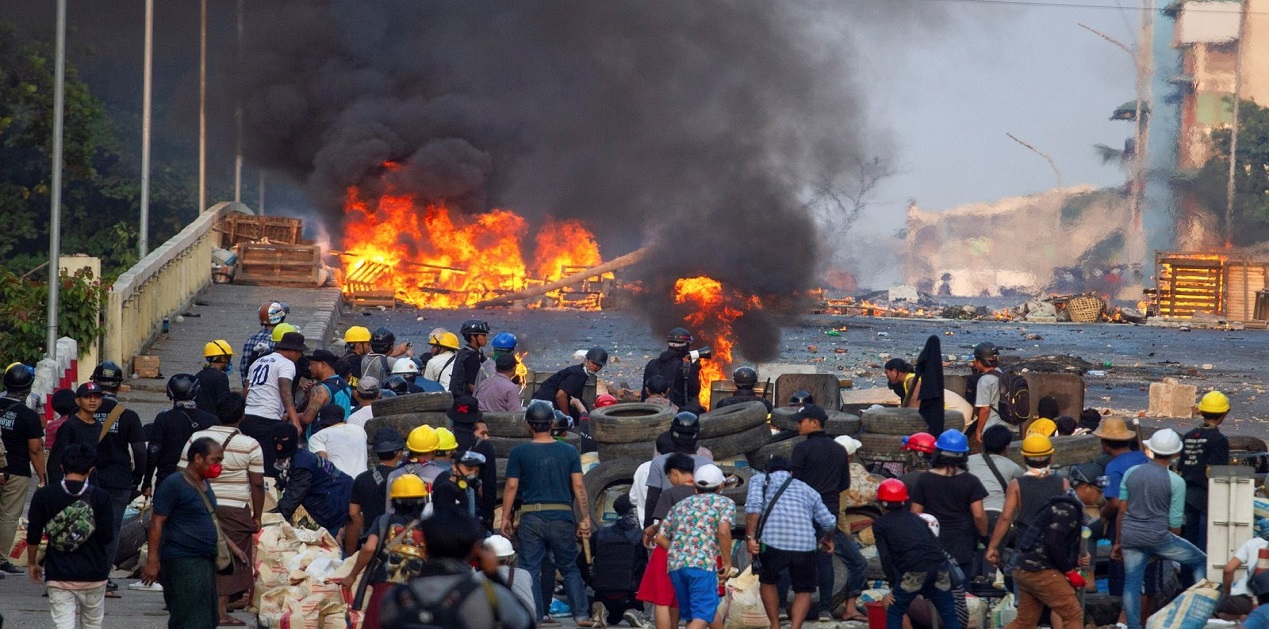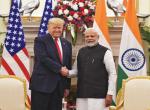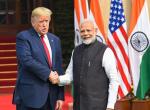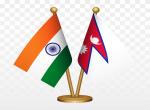The ousted leaders from National League for Democracy (NLD) party in Myanmar have formed a shadow ‘National Unity Government’ (NUG) to challenge the military or the ‘Tatmadaw’ which came to power through a coup in Feb, 2021. Many analysts predict that a civil war could break out as the NUG forces and ethnic minority armies engage in warfare against the Tatmadaw.1 Such a scenario would complicate security of the Indo-Pacific region considering Myanmar’s strategic geography. While Japan has refused to impose economic sanctions on Myanmar unlike many western countries including the US, India has abstained from voting in favour of a recently passed United Nations resolution, calling on the Tatmadaw to end the national emergency.2 Both New Delhi and Tokyo have maintained close relations with the Tatmadaw in the past. They must initiate trilateral dialogue with the Tatmadaw to devise a solution that brings Myanmar back to normalcy, cease violence, and reinvigorate democratic institutions.
India-Japan-Myanmar
The Indian army and the Tatmadaw have strengthened cooperation through many successful joint insurgency operations along their shared land border since the 1990s.3 Meanwhile, Japan-Myanmar relations go way back to the Second World War when the Japanese army trained the ‘Thirty Comrades’ in China’s occupied Hainan island; and one of them was Aung San Suu Kyi’s father General Aung San.4 Even as General Aung San-led Burma National Army later fought against Japanese occupation, the Tatmadaw and Japan maintained close relations since Myanmar’s independence in 1948. India’s envoy to the UN TS Tirumurti called the UN resolution ‘hasty course of action’ against the regime in Myanmar, adding that a ‘consultative and constructive approach involving the neighbouring countries’ would be better positioned to pacifying the crisis. On a similar note, Secretary-General of the Japan-Myanmar Association Yusuke Watanabe had opined that Japan must act as a bridge between the Tatmadaw and the US to allow Myanmar’s transition back to democracy.5 Japan-Myanmar Association is a private group including influential Japanese politicians and businessmen, some of whom like Watanabe has apparently had direct contact with Tatmadaw leader General Min Aung Hlaing.
China’s increasing presence in Myanmar is a daunting concern for India and Japan. As of 2018, China was Myanmar’s largest trading partner and foreign investor. Chinese foreign capital investment in Myanmar amounted to USD 20.24 billion from 1988 to 2018, mostly by state-owned Chinese companies in hydropower, mining, and oil & gas sectors. Notable projects include about 41 hydropower/dam projects, several mines, border economic zones, oil & gas pipeline, railway line and deep-sea port.6 Myanmar has spent USD 1.3 billion in arms import from China in the past decade alone, including strategic assets like combat aircraft and warships.7 Coercing or pressurizing the Tatmadaw is deemed counterproductive in Tokyo as well as New Delhi, something which can push Myanmar deeper into China’s ambit of strategic influence.8
Tackling the Crisis
Owing to their close engagements with the Tatmadaw, India and Japan are regional players in the conflict. If they disapprove economic sanctions or collective condemnation as a method to bring the Tatmadaw to stop violence, they should significantly advance one-on-one dialogue immediately and persuade the Tatmadaw to revisit negotiations. A positive step would be trilateral consultation among the three countries to set a roadmap for ceasefire arrangements and power-sharing model. Subsequently, the NUG and ethnic minorities must be involved to reach consensus and begin inter-party deliberations. Indian envoy to Japan conveyed that India was talking with ‘both sides’ in Myanmar, indicating the Tatmadaw and the NUG.9 Strefford explains Japan’s approach to Myanmar crisis as a middle-road between the West’s priority on human rights and democracy, and Asia’s priority on stability and economic development.10
Some analysts suggest that India and Japan must seek to resolve the crisis in Myanmar through the Quad.11 The regional grouping has picked up pace recently with an increased number of high-level meetings among its members. However, two of Quad’s members, the US and Australia remain opposed to engaging with the Tatmadaw. Moreover, a collective Quad approach is sure to attract strong objections from China given its general displeasure with the Quad. So far the Quad has focussed on regional peace and order. It would be a different ballgame if it undertakes resolution of internal conflicts at this stage. Premature and overly ambitious steps by the Quad can risk failure and affect its momentum in achieving larger objectives in the Indo-Pacific.
Alternatively, India and Japan could pursue a trilateral dialogue with the Tatmadaw and muster support from the US, Australia and rest of the Western bloc to allow a window before punitive actions on Myanmar are considered. Additionally, since many ethnic Chinese militias on the border are firmly controlled by Beijing, it is essential to cultivate at least tacit Chinese cooperation for peace process to manifest in Myanmar. It would be ill-advised to ignore or vilify China in collective efforts to bring peace in Myanmar, considering the Chinese political and economic clout in the country. China maintains good rapport with both the civilian democratic groups and the Tatmadaw. It shouldn’t have many reasons to be opposed to a truce among the warring factions. Actually, it would be in China’s interest to sustain peace in adjoining border regions with Myanmar.12
The Way Forward
Noted historian Thant Myint-U warns that Myanmar is heading towards an absolute economic collapse, adding that public anger in the country will grow increasingly out of control.13 The brutal suppression of the protestors by the Tatmadaw cannot be discounted. Abuse of power must be held accountable. At the same time, the Tatmadaw as an institution is likely to remain influential in politics of Myanmar. One method for peace, adopted several times in the past, is to attempt to crush authoritarian military regimes. But the other method can be to take a nuanced approach and facilitate a middle-ground solution, especially in case of Myanmar’s nationalist Tatmadaw. It can save citizens of Myanmar from colossal damage to life and property. India and Japan can lead the way and prompt the Tatmadaw into ceasing violence, implementing the ASEAN’s five-point resolution, and pave way for a more secure Myanmar. Even as Myanmar remains the ground for competing interests of regional powers in future, none would want escalation of its domestic conflict into a civil war.
Endnotes
- Annawitt, Philipp, “Myanmar’s Civil War Has Already Begun”, The Diplomat, April 19, 2021
https://thediplomat.com/2021/04/myanmars-civil-war-has-already-begun/ - Bhaumik, Anirban, “India abstains from voting on UNGA resolution on Myanmar”, Deccan Herald, June 19, 2021
- Roche, Elizabeth, “Myanmar military helped curb insurgency in Northeast India: M.M. Naravane”, Livemint, February 12, 2021
- Sinha, Rakesh, “The March of Myanmar’s Generals”, Indian Express, March 21, 2021
https://indianexpress.com/article/opinion/columns/anti-coup-demonstration-myanmar-protest-aung-san-suu-kyi-7237715/ - Watanabe, Yusuki, “On Myanmar, Japan Must Lead by Example”, The Diplomat, May 26, 2021
https://thediplomat.com/2021/05/on-myanmar-japan-must-lead-by-example/ - Lwin, Nan, “Infographic: 30 Years of Chinese Investment in Myanmar”, The Irrawaddy, January 25, 2019
https://www.irrawaddy.com/specials/infographic-30-years-chinese-investment-myanmar.html - Samsani, Sumanth, “Understanding the relations between Myanmar and China”, Observer Research Foundation, April 26, 2021
https://www.orfonline.org/expert-speak/understanding-the-relations-between-myanmar-and-china/ - Heijmans, Philip J. and Kwan Wei Kevin Tan, “Not just India, even Japan is worried about ceding influence to China in Myanmar”, ThePrint, June 21, 2021
https://theprint.in/world/not-just-india-even-japan-is-worried-about-ceding-influence-to-china-in-myanmar/681480/ - Sibal, Sidhant, “Talking to both sides in Myanmar, says Indian envoy to Japan”, WION, June 20, 2021
https://www.wionews.com/india-news/talking-to-both-sides-in-myanmar-says-indian-envoy-to-japan-392669 - Strefford, Patrick, “Japan’s response to the coup in Myanmar”, East Asia Forum, April 17, 2021
https://www.eastasiaforum.org/2021/04/17/japans-response-to-the-coup-in-myanmar/ - Sahoo, Niranjan and Maiko Ichihara, “The Quad can end the crisis in Myanmar”, Foreign Policy, March 19, 2021
https://foreignpolicy.com/2021/03/19/quad-myanmar-crisis-protests-india-japan-tatmadaw/ - Tower, Jason and Priscilla A. Clapp, “Chaos in Myanmar Is China’s Nightmare”, United States Institute of Peace, May 28, 2021
https://www.usip.org/publications/2021/05/chaos-myanmar-chinas-nightmare - Myint-U, Thant, “Myanmar’s Coming Revolution”, Foreign Affairs, July-August, 2021
https://www.foreignaffairs.com/articles/burma-myanmar/2021-06-11/myanmars-coming-revolution
(The paper is the author’s individual scholastic articulation. The author certifies that the article/paper is original in content, unpublished and it has not been submitted for publication/web upload elsewhere, and that the facts and figures quoted are duly referenced, as needed, and are believed to be correct). (The paper does not necessarily represent the organisational stance... More >>
Image Source: https://cdn.cfr.org/sites/default/files/styles/full_width_xl/public/image/2021/03/rtxahs2a-min.jpg










Post new comment